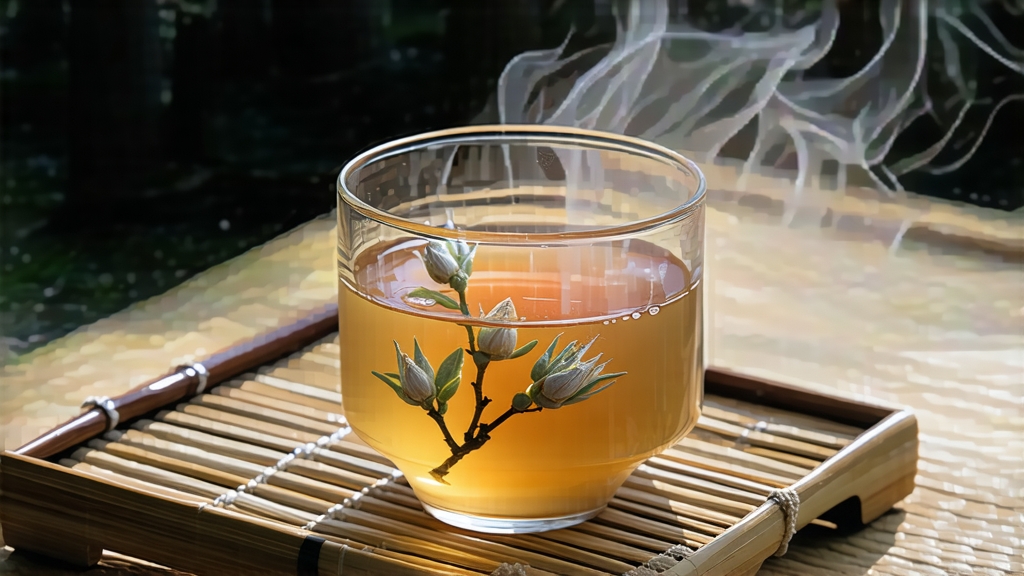
If green tea is the exuberant youth of Chinese tea culture and pu-erh its contemplative elder, then white tea—especially the luminous Fuding Silver Needle (Bai Hao Yin Zhen)—is the culture’s quiet moonlight, appreciated fully only when the world is still. Grown along the northern Fujian coast where the East China Sea breathes humid salt air over low granite hills, Silver Needle is harvested for only a few precious mornings each early spring, before the Qingming festival, when the hillside tea bushes awake clothed in silvery down.
Historical whispers place white tea’s birth during the Song dynasty’s imperial gardens, yet credible written records first name “Bai Hao Yin Zhen” in the late eighteenth century, when Fuding’s big-white-varietal (Da Bai Hao) bushes were granted tribute status. Legend claims that traveling scholars would barter a single ounce for passage across mountain passes, so highly was the needle-shaped bud valued as both beverage and medicine. By the 1890s, European ports received small consignments labeled “White China Tea,” fetching prices above first-flush Darjeeling; still, production remained tiny, often reserved for scholars, monks, and pregnant women who believed its cooling energy (yin) calmed both womb and mind.
Botanically, Silver Needle is the apical bud—never a leaf—plucked from either Fuding Da Bai Hao or the related Zhenghe Da Bai cultivar. The ideal bud is 1.5–2.5 cm long, plump like a pearl, and wrapped in a velvet of protective trichomes that shimmer under sun. Because only the shoot’s tip is taken, a single kilogram demands roughly thirty-thousand buds, all picked before ten o’clock so that dew does not ferment on their surface. No other tea category is so ruthlessly selective; even high-grade Longjing keeps a leaf and a half.
Craft follows the Daoist maxim of wu-wei—non-action. After picking, buds are spread one layer deep on bamboo trays called water screens, then left to wither for thirty-six to forty-eight hours in a shaded corridor where mountain breezes and gentle sunlight coax moisture away. No pan-firing, no rolling, no kneading: just time and air. When the bud’s internal moisture drops to approximately ten percent, a careful bake at 40 °C finishes the process, locking in a faint maillard note reminiscent of toasted rice. The entire transformation is watched by masters who test brittleness between forefinger and thumb, listening for the almost inaudible “ting” that signals readiness.
Chemistry explains the cup’s delicacy. Minimal oxidation—usually five to ten percent—preserves monomeric catechins and the amino acid L-theanine, yielding an infusion that is pale champagne in color, viscous without astringency, and sweet like dewy melon. Over time, Silver Needle ages gracefully; compressed cakes stored in porous paper develop honey and date nuances after five years, a trait that has recently attracted investors who cellar the tea like vintage Sauternes.
To brew Silver Needle respectfully, begin with still spring water low in minerals; 80 °C is the upper limit, as hotter water coaxes bitter quercetins from the bud’s outer shell. Use a tall clear glass or a porcelain gaiwan of 120 ml; three grams (roughly two heaping teaspoons) suffices. Awaken the buds with a quick rinse, then steep twenty seconds. Watch the vertical ballet: buds sink, then slowly rise, trichomes unfurling like tiny umbrellas. Decant fully; the first liquor offers aromas of fresh alfalfa, cucumber skin, and a distant hint of marine brine. Second infusion, thirty seconds, brings a creamier body, almost lactonic, while the third, stretched to fifty seconds, may surprise you with a faint note of white peach. Six infusions are common before the buds surrender, at which point they can be transferred to a glass carafe of cool water for an overnight cold brew that tastes like starlight on limestone.
Tasting protocol borrows from wine yet remains simpler. Observe clarity: the best lots show a faint iridescent rim called “silver circle.” Swirl and inhale; quality markers are absence of grassiness and presence of “mountain air”—a scent impossible to define until you have walked the granite ridges of Taimu Mountain at dawn. On the palate, search for texture more than flavor: a gly